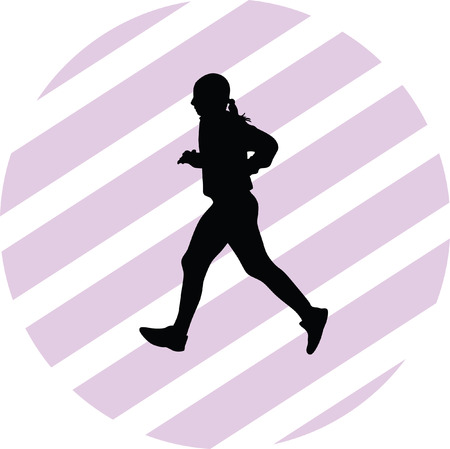Understanding Adolescent Substance Abuse in the U.S.
Substance abuse among American teenagers is a serious and complex issue that affects families, schools, and entire communities. Many young people experiment with drugs or alcohol during their teen years, but for some, this experimentation can lead to long-term problems and addiction. To better understand why adolescent substance abuse happens and how it impacts lives, its important to look at the numbers, the risk factors, and the unique challenges that come with growing up in the United States.
Prevalence of Substance Abuse Among Teens
Every year, surveys like Monitoring the Future and the National Survey on Drug Use and Health collect data about drug and alcohol use among American teens. The following table shows some recent statistics:
| Substance | % of 12th Graders Reporting Use (Past Year) |
|---|---|
| Alcohol | 46% |
| Marijuana | 30% |
| Prescription Drugs (misused) | 7% |
| E-cigarettes/Vaping (nicotine) | 22% |
These numbers show that substance use is not uncommon among high school students, with alcohol and marijuana being the most frequently used substances.
Main Risk Factors for Teen Substance Abuse
Certain situations and influences can increase a teens risk of substance abuse. Understanding these risk factors helps parents, educators, and healthcare providers support teens more effectively.
| Risk Factor | Description |
|---|---|
| Peer Pressure | Friends or classmates may encourage trying drugs or alcohol as a way to fit in. |
| Mental Health Issues | Anxiety, depression, or trauma can make teens more likely to self-medicate with substances. |
| Family Environment | Lack of supervision, parental substance use, or family conflict increases risk. |
| Community Influences | Poverty, exposure to violence, or easy access to drugs contribute to higher rates of abuse. |
| Cultural/Societal Norms | Media portrayals and social acceptance can shape attitudes toward drinking and drug use. |
Cultural and Societal Influences in the U.S.
The United States has a unique blend of cultural influences that affect how teens view substances. For example, alcohol is often seen as a normal part of celebrations or social events. In some areas, marijuana use has become more accepted due to changing laws. Social media also plays a big role—teens are constantly exposed to images and stories that may glamorize drinking or drug use. At the same time, many communities have strong anti-drug campaigns and programs that promote healthy choices.
The Consequences of Substance Abuse for Teens
The impact of substance abuse goes far beyond just “getting in trouble.” It can affect a teens brain development, academic performance, relationships with family and friends, and physical health. Early substance abuse is also linked to higher risks of addiction later in life. Some consequences are immediate—like accidents or legal problems—while others might not show up until years later.
2. Unique Challenges in Rehabilitation for Teens
Rehabilitating adolescents struggling with substance abuse is very different from working with adults. Teens face a unique set of physical, emotional, developmental, and social challenges that require specialized approaches. Understanding these differences helps families and professionals support teenagers more effectively during recovery.
Physical and Developmental Differences
Teenagers’ brains and bodies are still developing, which means substance use can have a bigger impact on their growth and long-term health. Their decision-making skills and impulse control are not fully matured, making it harder for them to resist temptation or understand the consequences of their actions.
| Aspect | Teens | Adults |
|---|---|---|
| Brain Development | Ongoing; still developing reasoning and self-control | Fully developed |
| Physical Health Risks | Greater risk of long-term damage | Risks present but usually less severe than for teens |
| Treatment Approach | Needs to be age-appropriate and engaging | Can use more traditional methods |
Emotional and Mental Health Challenges
Adolescence is already an emotional roller coaster. Substance abuse can make things like anxiety, depression, or mood swings even worse. Many teens use substances to cope with stress, trauma, or feelings of isolation. Addressing mental health concerns alongside substance use is crucial in teen rehabilitation programs.
The Role of Family Systems
Family dynamics play a huge role in a teen’s recovery journey. Parents or caregivers often need education and support themselves to help their child. Sometimes, family issues like conflict, lack of communication, or instability can make recovery harder for the adolescent.
Examples of Family Influences:
- Supportive Families: Provide encouragement and stability during treatment.
- Dysfunctional Families: May contribute to relapse or hinder progress if unresolved issues are not addressed.
- Cultural Expectations: Can shape attitudes toward substance use and recovery.
The Power of Peer Influence
Peeers are extremely important during the teenage years. Positive peer groups can motivate teens to stay sober, while negative influences can lead to relapse or risky behaviors. Rehabilitation programs often include group therapy and peer support to help teens build healthy friendships.
| Peer Influence Type | Description | Impact on Recovery |
|---|---|---|
| Positive Peers | Friends who support sobriety and healthy choices | Encourage progress and accountability |
| Negative Peers | Friends who use substances or encourage risky behavior | Increase risk of relapse and setbacks |
| Support Groups | Peeers in recovery programs sharing similar experiences | Create a sense of belonging and hope for change |
Treating adolescent substance abuse isn’t just about stopping drug or alcohol use—it’s about addressing all the factors that make teen rehab unique. By understanding these challenges, families and communities can better support young people on their path to recovery.

3. Evidence-Based Approaches to Adolescent Rehab
Overview of Treatment Models in the United States
Adolescent substance abuse rehabilitation in the U.S. relies on treatment models that have been proven effective through research and practice. These approaches are tailored to meet the unique needs of teens, recognizing that their brains and social environments are still developing. Here are some of the most widely used evidence-based approaches:
Cognitive Behavioral Therapy (CBT)
CBT is one of the main tools therapists use to help teens understand how their thoughts and feelings influence their behaviors. Through CBT, adolescents learn to identify triggers for substance use, develop healthier coping skills, and change negative thinking patterns. Sessions may include role-playing, goal setting, and practical exercises that can be used in daily life.
Family-Based Interventions
Family involvement is key to successful adolescent rehab. Programs like Multidimensional Family Therapy (MDFT) or Functional Family Therapy (FFT) bring parents and caregivers into the recovery process. These programs focus on improving communication, rebuilding trust, and creating supportive home environments. By working together, families can better support their teen’s recovery journey.
School-Based Programs
Schools play an important role in prevention and early intervention. School-based programs often provide group counseling, peer support groups, and educational workshops right on campus. These programs aim to reach students where they spend much of their time and help build a positive school culture that discourages substance use.
Comparison of Evidence-Based Approaches
| Treatment Model | Main Focus | Key Benefits |
|---|---|---|
| Cognitive Behavioral Therapy (CBT) | Changing negative thought patterns and behaviors | Teaches coping skills; helps teens recognize triggers; adaptable for individual needs |
| Family-Based Interventions | Strengthening family relationships and communication | Improves support system; addresses family dynamics; lowers relapse risk |
| School-Based Programs | Early intervention and education within schools | Makes help accessible; reduces stigma; promotes peer support |
What Makes These Approaches Effective?
The success of these models comes from their adaptability to each teen’s situation and the inclusion of important social supports like family and school. Effective adolescent rehab doesn’t just focus on stopping substance use—it aims to build life skills, confidence, and healthy relationships that last long after treatment ends.
4. Community Resources and Support Systems
The Role of Community Involvement in Recovery
Community involvement is a key factor in helping American adolescents overcome substance abuse. When teens feel supported by their local community, they are more likely to stay motivated and engaged in their recovery journey. Local schools, faith-based organizations, youth clubs, and neighborhood centers can all play an important role by providing safe spaces and positive activities for teens.
Extracurricular Activities: Keeping Teens Engaged
Participating in extracurricular activities gives teens a sense of belonging and purpose. Sports teams, art classes, music groups, and volunteering opportunities keep adolescents busy with healthy routines while building self-esteem and social skills. These activities not only distract from negative influences but also help teens discover new interests and talents.
Types of Extracurricular Activities and Their Benefits
| Activity Type | Benefits for Adolescents |
|---|---|
| Sports Teams | Encourages teamwork, discipline, and physical health |
| Art or Music Classes | Promotes creativity and emotional expression |
| Volunteering | Builds empathy and community connections |
| Youth Clubs (e.g., Boys & Girls Clubs) | Provides mentorship and structured support |
Support Groups: Finding Shared Understanding
Support groups are essential resources for adolescents in recovery. Organizations like Alateen or SMART Recovery Teen Groups offer a safe environment where teens can share their experiences without judgment. These groups help participants realize they are not alone, learn coping strategies from peers, and build resilience together.
Mentorship Programs: Guidance from Trusted Adults
A mentor can make a huge difference in a young persons life. Mentorship programs pair teens with caring adults who offer guidance, encouragement, and accountability. These relationships often help adolescents set goals, navigate challenges, and celebrate progress along the way.
Examples of Mentorship Programs in the U.S.
| Program Name | Description | Main Focus |
|---|---|---|
| Big Brothers Big Sisters of America | Pairs youth with adult mentors for one-on-one support | Lifelong guidance and positive role modeling |
| Boys & Girls Clubs of America Mentoring Program | Offers group mentoring within club environments | Academic achievement and personal development |
| YMCA Youth Mentoring Services | Connects youth with mentors through recreational activities | Healthy lifestyles and leadership skills |
Aftercare Services: Long-Term Success Beyond Treatment
Aftercare services help prevent relapse by offering ongoing support once formal treatment ends. This may include continued counseling sessions, check-in meetings with case managers, or involvement in sober living communities. Accessible aftercare ensures that teens have the resources they need to maintain their progress as they transition back to everyday life.
5. Success Stories: Real-Life Experiences
Inspiring Journeys of Recovery
Overcoming substance abuse as a teenager is never easy, but many American adolescents have shown incredible strength on their path to recovery. Their stories highlight the importance of support, determination, and hope for a brighter future. Here are some real-life examples that demonstrate how rehabilitation can change lives.
Emilys Story: Finding Strength Through Family Support
Emily started experimenting with prescription pills in middle school. As her dependence grew, her grades dropped and her relationships suffered. With the encouragement of her parents, Emily entered a local outpatient rehab program designed for teens. Through counseling, family therapy sessions, and ongoing support at home, Emily regained control of her life. Today, she’s a high school graduate looking forward to college and remains active in peer support groups.
Jaydens Journey: Rebuilding Trust and Confidence
Jayden struggled with alcohol abuse throughout high school. After several run-ins with the law, his family intervened and found a residential rehab center that specialized in adolescent care. The program included group therapy, mentorship from people in recovery, and recreational activities to rebuild self-esteem. Jayden now mentors other teens facing similar challenges and has been sober for over two years.
The Role of Family and Community Support
Family involvement often plays a critical role in helping teens stay sober after rehab. Many successful recovery stories involve families who participate in counseling sessions, set healthy boundaries at home, and celebrate milestones together. Schools and community organizations also offer ongoing support through clubs, after-school programs, and accessible mental health resources.
| Success Factor | Description | Example from Stories |
|---|---|---|
| Family Involvement | Active participation in recovery process by parents or guardians | Emily’s parents attended therapy sessions and offered daily encouragement |
| Professional Support | Counseling, medical help, and structured programs tailored to adolescents | Jayden benefited from group therapy and mentorship at a rehab center |
| Peer Connections | Building friendships with others in recovery to share experiences and advice | Emily joined a teen support group that meets weekly |
| Personal Motivation | Setting personal goals for the future helps maintain sobriety | Jayden became a mentor to help others and stay focused on his own growth |
Sustaining Sobriety: An Ongoing Process
Staying sober is not just about completing a rehab program—it’s an ongoing journey that requires continuous effort and support. Both Emily and Jayden continue to attend support meetings and rely on their families for guidance. These success stories show that with dedication, the right resources, and strong relationships, adolescents can overcome substance abuse and build fulfilling lives.


